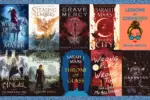I was 12 years old when I had my first run-in with a Little Free Library. I decided to donate one of my favorite books of all time, “A Tree Grows in Brooklyn,” by Betty Smith. Like any well-loved book, my copy was inundated with underlines and highlights of my favorite sections. Every page had survived some serious wear and a multitude of page turns. This novel was so special to me, mainly because the main character, Francie, had been like a friend to me. Initially, it was impossible to imagine giving this book away, because among all of my re-reads, it had become a part of me.
When I arrived at the Little Library, though, my emotions turned on their axis. I was overjoyed. The Little Library was absolutely adorable, with its yellow base and little green roof with slatted siding. This moment was euphoric and extraordinary because I could share my favorite book with somebody else, who would hopefully love it as much as I had. On the flip side, I got to choose a book that somebody else adored as well and explore its every crevice. I opened the lid and dropped off “A Tree Grows in Brooklyn,” along with a piece of myself and my childhood. After admiring the vast array of books that I could choose from, I picked up “The Catcher in The Rye,” by J.D. Salinger — a classic.
When I opened the book, I was overjoyed to see just as many underlined passages, annotations and love that my donated copy had. This copy of “The Catcher in the Rye” had been just as special to its previous owner as “A Tree Grows in Brooklyn” had been to me. As I devoured Salinger’s timeless novel, I was not only swept into the life of its main character, Holden Caulfield, I was also swept into the book’s previous owner’s inner thoughts — including their favorite lines, their thought process and their personal connection with Holden. I decided to leave my own imprint on this copy of the book, interacting with the previous owner in a raw, unique way, with my own underlining and added annotations. With this book exchange, the book’s previous owner and I shared a sliver of ourselves with each other.
This was the moment that I truly fell in love with Little Free Libraries and knew that I wanted to have one in my own yard when I grew up. Not only are Little Free Libraries a forum to share your favorite books with others, they’re an artistic outlet. A large part of the fun is the creative artistic design that goes into their creations. There is an abundance of design options for building your own Little Free Library — essentially unlimited. A minimalist tree cut-out design, for example, can champion a connection with both books and nature. Other options include building a wooden Little Library that you can stake into the ground, or perhaps, one that connects to a garden or shed. Before building, though, it’s essential to register your Little Free Library so that book lovers galore can find your little book nook.
These Little Libraries have quite the history. Founders Todd Bol and Rick Brooks took their inspiration from Andrew Carnegie, a Pittsburgh industrialist and philanthropist who pioneered the “take a book, leave a book” idea, with a goal of funding the creation of 2,508 free public libraries across the world for the public’s enlightenment.
In 2009, Brooks and Bol, taking their cue from Carnegie, proposed their own goal of creating 2,508 Little Free Libraries within four years. Unsurprisingly, Brooks and Bol had a tight-knit relationship with books and literature in their youth. Bol’s mother was a teacher who adored books. In her honor, he turned a model of a one-room schoolhouse into a place to exchange books — the first of many models to come. After this initial success, he built several more to give away to all of his enthusiastic neighbors and friends. Brooks saw Bol’s do-it-yourself project and knew that he had to be a part of it too. He too knew the power of books and the profound way that these Little Libraries could foster an interconnected, enlightened community.
In the summer of 2010, Brooks and Bol’s first official Little Free Library was born in the Hudson area, on a beautiful bike path, in Madison. In only a few months, thousands of people had seen the Library and had felt its magical pull. The curiosity and demand for the libraries began to grow. How couldn’t it? The people enthusiastically endorsed the expansion of the Free Little Libraries movement. With this passion and advocacy, the nonprofit Little Free Libraries organization was officially born.
Brooks and Bol wound up exceeding their goal of 2,508 libraries in August of 2012, an entire year and a half before their projected target date. Today, the movement is off the charts, with a total of over 100,000 Little Free Libraries all over the world (to find one near with you, click on this link). These growing numbers are laudable and empowering; Little Free Libraries have the capability to expand over every national boundary and across every ocean. They’re mobilizing and they create connections between strangers over a shared love of literature. We need more of this inter-connected, shared joy and deep-rooted love for our neighbors and fellow globe-dwellers.
Little Free Libraries aren’t just a creative, innovative outlet that foster personal contentment and a connection between book lovers everywhere. They also send a salient message — if you have a visceral passion for something, you can change the world. Change starts at the local level, and like Brooks and Bol, you too can follow your passions and create change in your community — and the world.

















